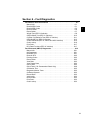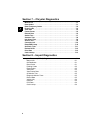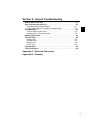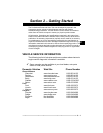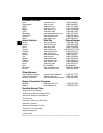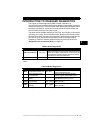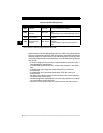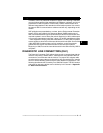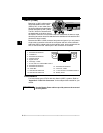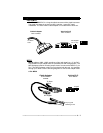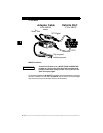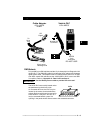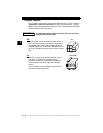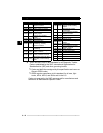
• • • • • • • • • • • • • • • • • • • • • • • • • • • • • • • • • • • • • • • • • • • • • • • • • • • • • • • • • 2 – 5
Getting Started
2
In addition, SAE has published hundreds of pages of text defining a standard
communications protocol that establishes the hardware, software, and circuit
parameters of OBD II systems. Unfortunately, vehicle manufacturers have
different interpretations of this standard communications protocol. As a result,
the generic OBD II communications scheme used will vary, depending on the
vehicle.
SAE publishes recommendations, not laws, but the Environmental Protection
Agency (EPA) and California Air Resources Board (CARB) made many of
SAE’s recommendations legal requirements that vehicle manufacturers were
required to phase in over a three-year period. Beginning in 1994, vehicles with
a new engine management computer – about 10% of each manufacturers fleet
– were supposed to comply with OBD II standards. For 1995, OBD II systems
were to appear on about 40% of the new vehicles sold in the USA. Some of the
1994-1995 OBD II systems were not fully compliant, so the Government
granted waivers to give manufacturers time to fine-tune their systems.
Beginning in 1996, most of the new vehicles sold in the USA were fully OBD II
compliant.
DIAGNOSTIC LINK CONNECTORS (DLC)
The Data Link Connector (DLC) allows the scan tool to communicate with the
vehicle’s computer(s). Before OBD II, manufacturers used different data link
connectors to communicate with the vehicle. The proper DLC adapter cable
must be used to connect the tool to the vehicle. Also, the vehicle’s DLC may be
found in several different places and have many different configurations. The
following describes the DLCs used by Ford, GM and Chrysler. The DLC location
and types for domestic vehicles can be looked up in the charts in “Appendix
A - Data Link Connectors".



